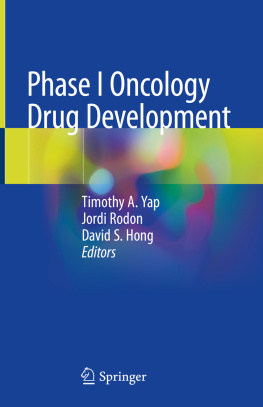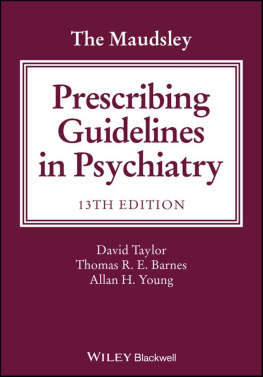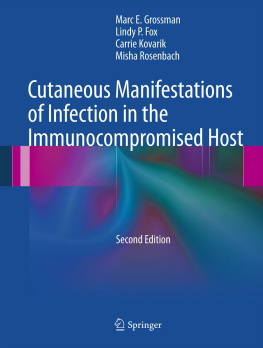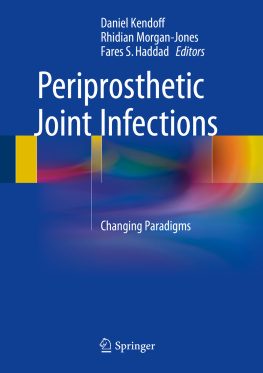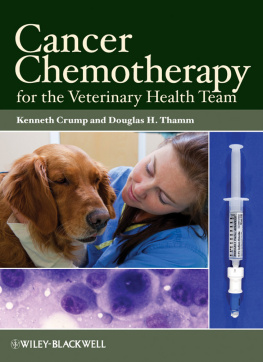Antimicrobial
Chemotherapy
SIXTH EDITION
Roger Finch
Peter Davey
Mark Wilcox
William Irving


Great Clarendon Street, Oxford ox2 6DP
Oxford University Press is a department of the University of Oxford.
It furthers the Universitys objective of excellence in research, scholarship,
and education by publishing worldwide in
Oxford New York
Auckland Cape Town Dar es Salaam Hong Kong Karachi
Kuala Lumpur Madrid Melbourne Mexico City Nairobi
New Delhi Shanghai Taipei Toronto
With offices in
Argentina Austria Brazil Chile Czech Republic France Greece
Guatemala Hungary Italy Japan Poland Portugal Singapore
South Korea Switzerland Thailand Turkey Ukraine Vietnam
Oxford is a registered trade mark of Oxford University Press
in the UK and in certain other countries
Published in the United States
by Oxford University Press Inc., New York
Oxford University Press 2012
The moral rights of the authors have been asserted
Database right Oxford University Press (maker)
First [edition] published by Ballire Tindall 1983
Second edition published 1989
Third edition published 1995
Fourth edition published 2000
Reprinted 2001, 2003 (twice), 2004, 2005
Fifth edition published 2007
This edition published 2012
All rights reserved. No part of this publication may be reproduced,
stored in a retrieval system, or transmitted, in any form or by any means,
without the prior permission in writing of Oxford University Press,
or as expressly permitted by law, or under terms agreed with the appropriate
reprographics rights organization. Enquiries concerning reproduction
outside the scope of the above should be sent to the Rights Department,
Oxford University Press, at the address above
You must not circulate this book in any other binding or cover
and you must impose the same condition on any acquirer
British Library Cataloguing in Publication Data
Data available
Library of Congress Cataloging in Publication Data
Library of Congress Control Number: 2011941967
Typeset in Minion by Cenveo, Bangalore, India
Printed in Great Britain
on acid-free paper by
Ashford Colour Press Ltd, Gosport, Hampshire
ISBN 9780199697656
10 9 8 7 6 5 4 3 2 1
Oxford University Press makes no representation, express or implied, that the drug
dosages in this book are correct. Readers must therefore always check the product
information and clinical procedures with the most up-to-date published product
information and data sheets provided by the manufacturers and the most recent codes of
conduct and safety regulations. The authors and the publishers do not accept responsibility
or legal liability for any errors in the text or for the misuse or misapplication of material in
this work. Except where otherwise stated, drug dosages and recommendations are for the
non-pregnant adult who is not breastfeeding.
Preface
Almost everyone in the developed world will receive several antibiotic courses during their lifetime. It is therefore not surprising that most clinicians and dentists will prescribe these drugs on a regular basis throughout their professional careers. Indeed, several antibiotics figure among the most frequent of all prescribed drugs.
Antibiotics are not only life-saving with regard to severe infections, such as pneumonia, meningitis, and endocarditis, but are also responsible for controlling much of the morbidity associated with non-life-threatening infectious disease; illness is abbreviated, return to normal activities is hastened, risk of infection transmission may be reduced and there is often economic benefit to the individual, as well as society, by reducing the number of working days lost. In addition, infectious complications of many commonly conducted surgical procedures are now preventable by the use of peri-operative antibiotic prophylaxis. Likewise procedures such as bone marrow and organ transplantation are also possible because of the effective control of complicating infections. These benefits are well known to healthcare professionals and to the public who no longer fear infection in the way earlier generations did. The very success of antimicrobial chemotherapy has led to a perception that such agents are generally safe and that industry will continue to generate new agents to ensure the effective control of most infectious problems.
Antibiotics have largely been derived from natural sources, mainly from environmental bacteria and fungi. Their use in clinical medicine has been one of the major successes of the past century. The term antibiotic was coined by Selman A Waksman, who recognized that these naturally derived substances were antagonistic to the growth of other micro-organisms in high dilution. Over the years, other agents have been developed by chemical synthesis. More recently much effort has been applied to identifying genomic research based products. The term antimicrobial agents captures all such compounds which in turn have been subdivided into antibacterial, antifungal, antiparasitic (anthelminthic and antiprotozoal) and antiviral agents according to the target pathogen. However, this purist approach is often ignored in practice and the term antibiotic is somewhat loosely applied to all these agents. The reader will find all such terms in use in this book.
Antibiotics are unique among therapeutic agents in that they target invading micro-organisms rather than any pathological process arising from host cells or tissues. Furthermore, unlike other classes of drug, micro-organisms have the inherent or acquired ability to evade or inactivate antimicrobial activity of these drugs. Such resistance presents a major threat to sustaining effective treatment and prevention of infectious disease.
Indeed, controlling antibiotic resistance is one of the greatest challenges facing healthcare professionals and the public and is likely to remain so. While new drugs, vaccines and better diagnostic methods are still a requirement, the fundamental issue is to ensure that existing agents are used effectively. This can only be achieved by ensuring those doctors, dentists, and, increasingly, other healthcare professionals who use these agents in the care of their patients, pursue good prescribing practice.
Good prescribing practice is the product of sound education, with particular emphasis on the acquisition of appropriate knowledge, skills, and professional behaviour. Good science informs good practice and since the knowledge base for prescribing practice is continuously expanding, the need for life-long learning is self-evident. Patient safety remains paramount in medicine. This is of particular importance since antibiotics are often used in the management of mild to moderate community infections and the prophylaxis of infections. The safety of antibiotics is monitored closely during drug development, at licensing and in clinical use. Since no drug is free from side effects, it is essential that the balance of risks and benefits of prescribing is understood by the prescribing practitioner. With more than 100 antimicrobial compounds currently available in the UK, this remains a particular challenge.
Setting forth the principles of rational antimicrobial chemotherapy is the whole purpose of this book. In revisiting the contents, we welcome Professor William Irving among the editors. All chapters have been revised, several rewritten and two new chapters introduced on antimicrobial stewardship and extended prescribing and also on Outpatient Parenteral Antimicrobial Therapy (OPAT), to reflect the changes that have taken place in guiding prescribing practices.


